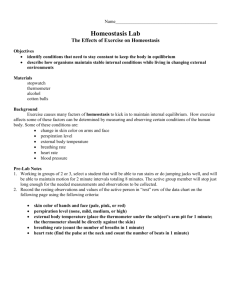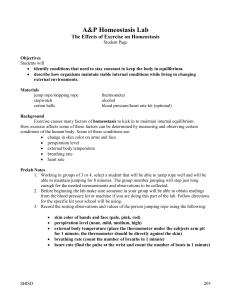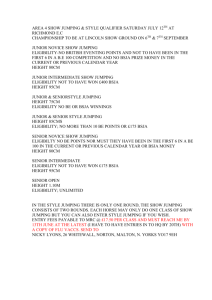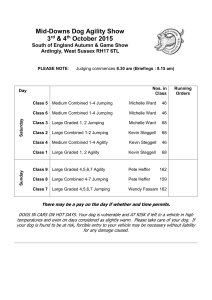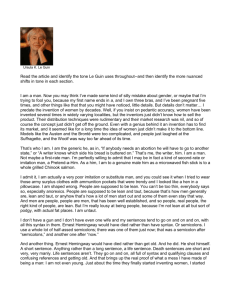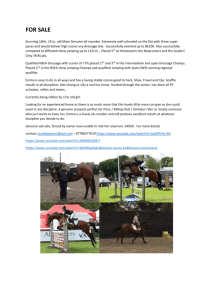Homeostasis and Exercise Lab
advertisement
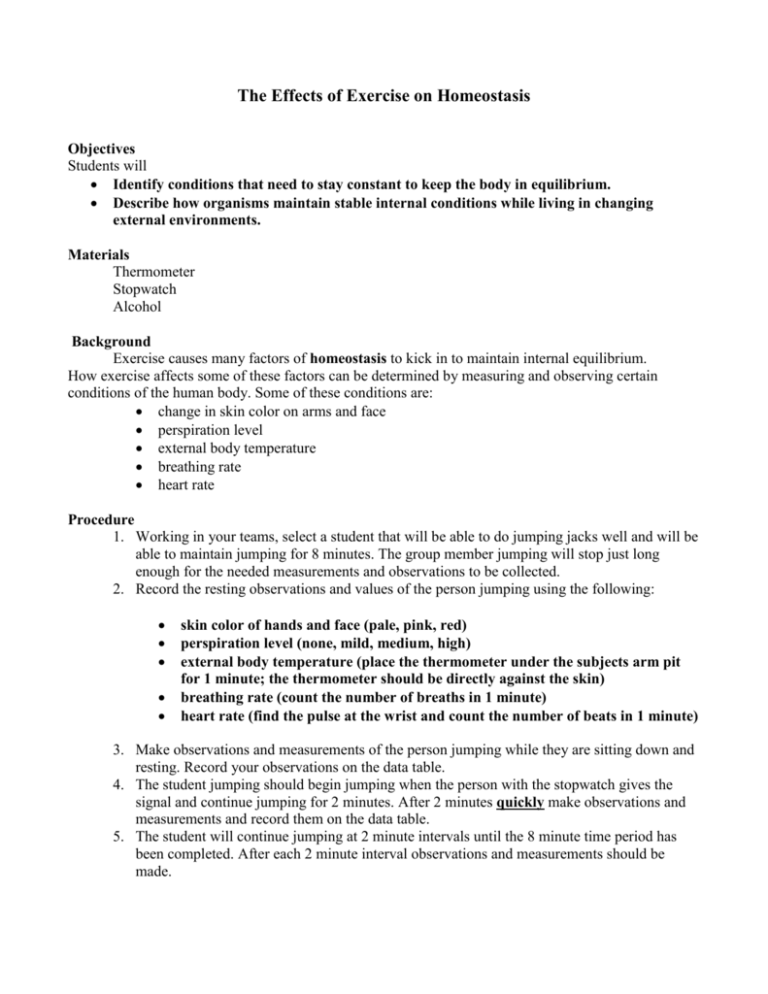
The Effects of Exercise on Homeostasis Objectives Students will Identify conditions that need to stay constant to keep the body in equilibrium. Describe how organisms maintain stable internal conditions while living in changing external environments. Materials Thermometer Stopwatch Alcohol Background Exercise causes many factors of homeostasis to kick in to maintain internal equilibrium. How exercise affects some of these factors can be determined by measuring and observing certain conditions of the human body. Some of these conditions are: change in skin color on arms and face perspiration level external body temperature breathing rate heart rate Procedure 1. Working in your teams, select a student that will be able to do jumping jacks well and will be able to maintain jumping for 8 minutes. The group member jumping will stop just long enough for the needed measurements and observations to be collected. 2. Record the resting observations and values of the person jumping using the following: skin color of hands and face (pale, pink, red) perspiration level (none, mild, medium, high) external body temperature (place the thermometer under the subjects arm pit for 1 minute; the thermometer should be directly against the skin) breathing rate (count the number of breaths in 1 minute) heart rate (find the pulse at the wrist and count the number of beats in 1 minute) 3. Make observations and measurements of the person jumping while they are sitting down and resting. Record your observations on the data table. 4. The student jumping should begin jumping when the person with the stopwatch gives the signal and continue jumping for 2 minutes. After 2 minutes quickly make observations and measurements and record them on the data table. 5. The student will continue jumping at 2 minute intervals until the 8 minute time period has been completed. After each 2 minute interval observations and measurements should be made. 6. When the 8 minutes is up, the student jumping will rest for 1 minute. After 1 minute, observations and measurements will be taken for the final time. Don’t forget to record the data on the data table. 7. Clean the thermometer with alcohol and return it and all other lab materials to the designated area. 8. Make a separate graph for each of the following: External Body Temperature at Various Intervals of Exercise Breathing Rate at Various Intervals of Exercise Heart Rate at Various Intervals of Exercise 9. Answer the questions in the conclusion section to describe and explain the results of the lab. Data: Observations and Measurements during Various Intervals of Exercise Time Intervals Rest 2 Minutes 4 Minutes 6 Minutes 8 Minutes Rest After Exercise 1 Minute Body Color Perspiration Level Body Temperature Breathing Rate Heart Rate Conclusion: 1. List the changes you observed in the body color and perspiration level in response to? 2. Explain how the changes help the body adjust to maintain equilibrium (homeostasis)? 3. Speculate why a change in body temperature occurs? 4. Name which mechanisms your body uses to maintain a constant body temperature? 5. Explain why an increased breathing rate accompanies exercise? 6. Explain why does an increased heart rate accompanies exercise? 7. What conclusions can you can draw about your body’s ability to maintain homeostasis? equilibrium?(homeostasis).
